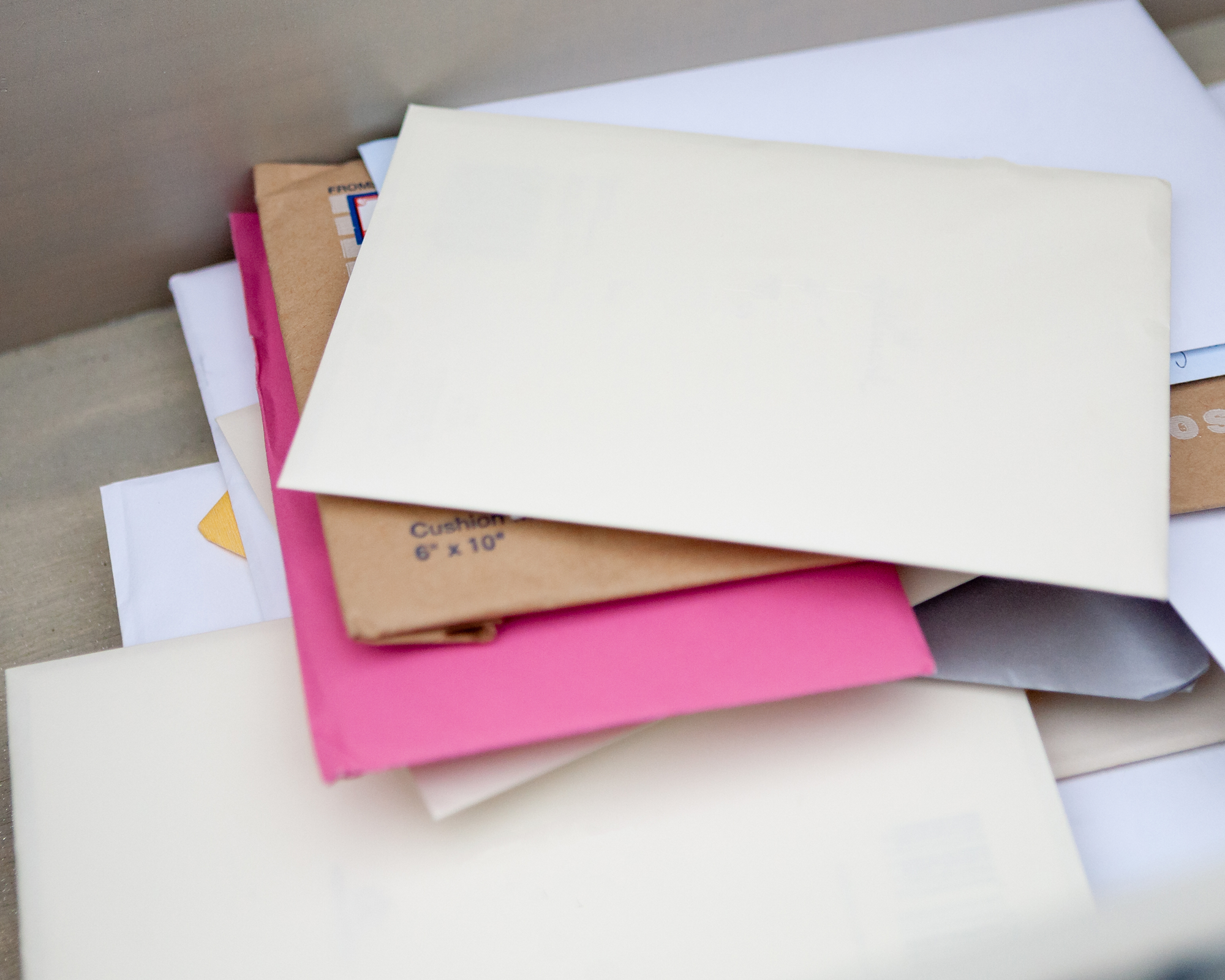
From letters and bills to invites, ads and the inevitable ‘junk’, organizing mail can be a time-consuming task, particularly if it requires attention first. Ignoring it sure feels like the easier option, but the problem with post is that it just keeps on coming. Those piles will soon build, and they don’t look pretty – no matter how neatly you stack them.
More importantly, you also run the risk of missing something important. The most effective home organizing ideas are those that keep both your home – and your life – in good working order, so when it comes to mail, establishing a sensible sorting system is paramount.
How to organize mail
‘I’d say the biggest problem to overcome when it comes to mail is the "I’ll look at it later" mentality. It’s always better to do it there and then, and once the habit is established, you won’t think twice,' says professional organizer Miriam Ortiz y Pino, founder of More Than Organized.
So it seems organizing mail is surprisingly easy once you know how. The trick is to be consistent with it. We’ve quizzed the experts to find out more.

1. Set up a ‘drop spot’
Whether you sort mail as part of organizing a kitchen or a home office, have one set place where you store and open it. Allow yourself plenty of room to set up stacking trays or baskets to act as a mail sorter, or if you’re organizing small spaces like a console table or narrow hallway, try a simple letter holder, or a wall-mounted mail organizer, like this one from Amazon.
'I love designs like this with multiple slots, so you can set mail that needs to be resolved (like bills) apart from mail that needs to be filed away or recycled, all while keeping your counters clear,' says home improvement expert Tom Nolan, founder of All Star Home.
2. Sort mail as soon as it arrives
There’s nothing more stress-inducing than stacks of unopened mail, so you’ll want to do at least a quick sort as soon as you remove it from the mailbox – saves you the hassle of decluttering countertops all the time, too. Professional organizer Jan Arkwright, founder of Before & After Organizing by Jan recommends instilling the ‘touch it once’ rule for decluttering your mailbox.
Design expertise in your inbox – from inspiring decorating ideas and beautiful celebrity homes to practical gardening advice and shopping round-ups.
‘Most people think this means picking up a letter and actioning it straightaway. Whilst this might seem sensible, in reality, it’s pretty unsustainable. We don’t always have time to RSVP to an invite or pay a bill there and then, so instead, we just don’t pick it up at all, which is the exact opposite of what we’re trying to achieve,' she says.
‘What it really means is making a decision. Does it stay or go? If it stays, do you need to do something with it? Or just hold onto it for now? This is much more feasible. By discarding what you don’t need, you’ve already decreased your ‘to-action’ list in half, making you more likely to get the job done rather than continually putting it off’.

Jan is a professional organizer with over 10 years experience offering custom sustainable organizing solutions for homes and offices. She loves working with clients to help declutter and maximize their space and storage. Jan is also on the board of National Association of Productivity & Organizing Professionals, as well as the Institute for Challenging Disorganization.
3. Ditch the junk
Ideally, you’d have a recycling bin near to your ‘drop spot’, so you can get rid of junk mail straight away. ‘Be sure to shred anything containing personal details or sensitive information before you put it into the recycling,' reminds Millie Hurst, section editor, Homes & Gardens.
If you’re receiving coupons, catalogs, or flyers from places that are no longer of interest, now’s the time to unsubscribe. Don’t put it off, do it now. You can also request to be removed from generic mailing lists – the Better Business Bureau has more advice on this to help you get rid of paper clutter.
‘The recurring themes here are immediacy and reducing the amount of paperwork that actually requires your attention. Only this should be allowed to take up space in your home,' says professional organizer Amanda Wiss, founder of Urban Clarity.

Millie Hurst is Section Editor at Homes & Gardens, overseeing the Solved section, which provides readers with practical advice for their homes. Millie has written about and tried out countless cleaning, organizing and DIY hacks in the six years since she became a journalist, and has worked in both London and New York.
4. Put a filing system in place

If there’s multiple people in your household, it’s a good idea to categorize mail as soon as it arrives so it doesn’t get missed. Assigning a cubby hole for each family member makes for a neat hallway storage idea, although trays and baskets work just as well and can be stored anywhere.
Another option is to file mail by type. How you categorize is entirely up to you, it’ll likely differ from household to household. While there’s no ‘right’ way, popular categories include: bills to be paid, household records, personal correspondence, vehicles, and return slips.
‘If you have children in school, having a second filing system to house reports, slips or forms that need a signature is worth doing. It might not be arriving in the post, but it’s equally as important,' says professional organizer Lauren Saltman, founder of Living.Simplified.

For Professional Organizer Lauren Saltman of Living.Simplified., decluttering and organizing is how she lives her daily life, whether she is organizing her home, a friend’s office, or a client’s garage, her resourceful approach yields happy clients who learn to incorporate techniques for a happier and more simplified lifestyle.
5. Designate a day to deal with admin

Whether it’s once a day or once a week, setting aside time to work through mail that requires a little more effort will ensure you respond to things in a timely fashion. Allowing it to build will only result in overwhelm, so set up a regularly occurring appointment in your calendar as a reminder – and stick to it.
6. Go paperless with your bills

Opting in for digital correspondence is one of the best ways to cut down on paper clutter – and it’s better for the environment, too. Most providers now offer this service, but if you’ve been an existing customer for a while, you’ll need to contact them to change your preference. Going forwards, always tick the ‘contact by email’ box.
Receiving magazines, newspapers and catalogs digitally is also an option. If you prefer to read the paper version, consider taking photographs of your favorite articles, then recycle as soon as you’ve finished reading.
‘Use a scanner to digitize mail you need to keep for a long time, like important tax documents or health insurance info. This will ensure you don’t lose them, as well as reducing clutter build up,' says professional organizer Christina Giaquinto, brand ambassador of Modular Closets.
7. Store coupons close to hand
As a general rule, mail is best stored in one place, but coupons and vouchers are the exception. There’s nothing worse than realizing you could have saved yourself a tonne of money, had you found that flyer a few days beforehand…! Gather all promotional mail and store it somewhere easily accessible, then make a habit of checking it before you head out to the store.
FAQs
How do you organize bills and letters?
Staying on top of your mail with a sensible filing system is the best way to organize bills and letters and ensure you respond to them in a timely fashion. To do this effectively, you’ll need to sort mail as soon as it comes in – don’t put it off. By sort, we don’t necessarily mean ‘action’, rather categorize it so you know what you’re dealing with.
You can get rid of junk there and then, but set aside some time once a day, or once a week, to deal with anything outstanding; unpaid bills, return slips, RSVPs, and so on. Opt for digital correspondence where you can going forwards to keep mail to a minimum; you’re much more likely to stay on top of it that way.
Just like with most organizing tasks, there’s a fine balance to be had between practicality and prettiness when it comes to keeping mail in order. Choose stylish organizers where you can, and don’t just shove letters at random, take the time to arrange them neatly.
If you have the space, you could even set up your own little home mail station, complete with empty envelopes, postage stamps, parcel paper, and sellotape – you’ll be amazed at the time it saves!

For 10 years, Tara King worked as a Content Editor in the magazine industry, before leaving to become freelance, covering interior design, wellbeing, craft and homemaking. As well as writing for Ideal Home, Style at Home, Country Homes & Interiors, Tara’s keen eye for styling combined with a passion for creating a happy – and functional – family home has led to a series of organization and cleaning features for H&G.
